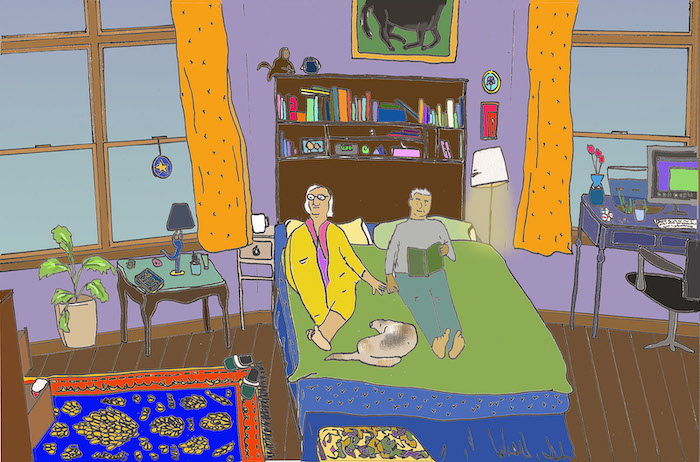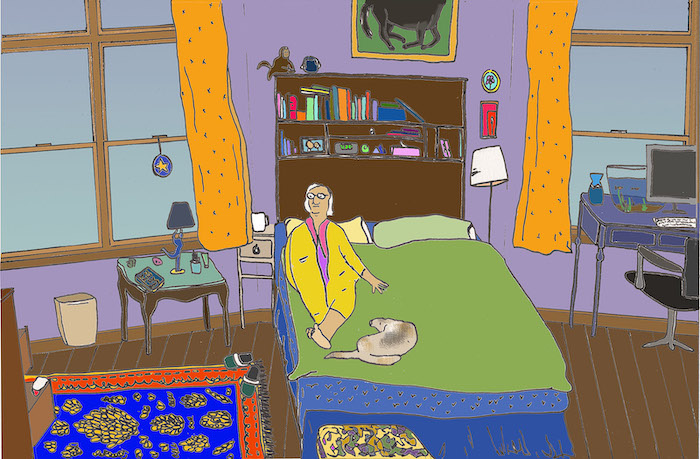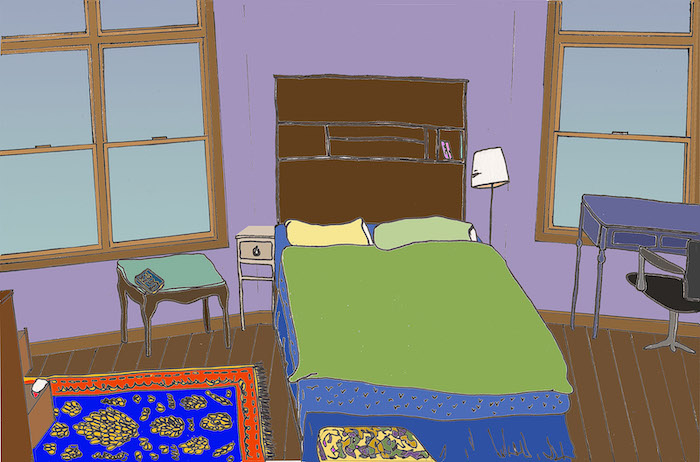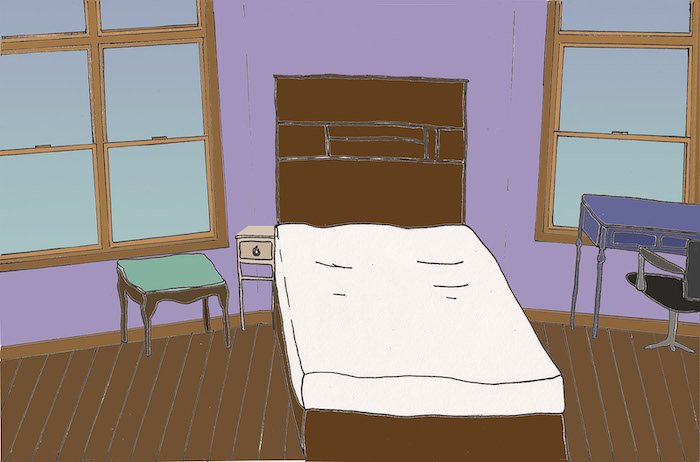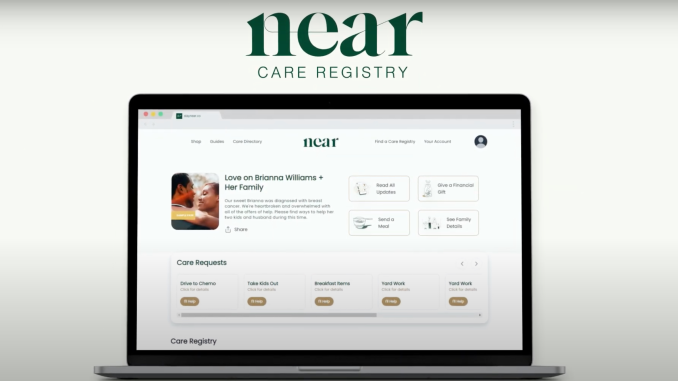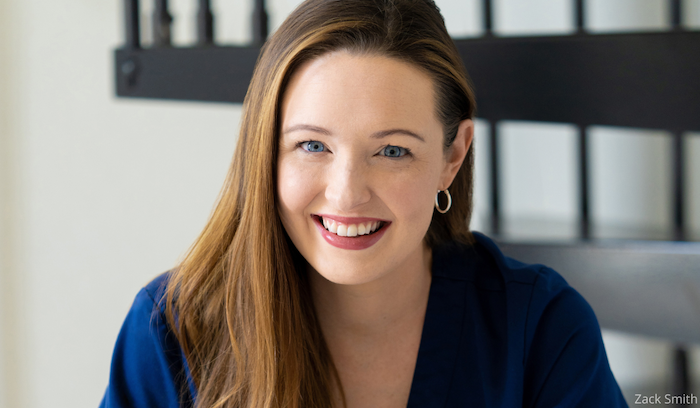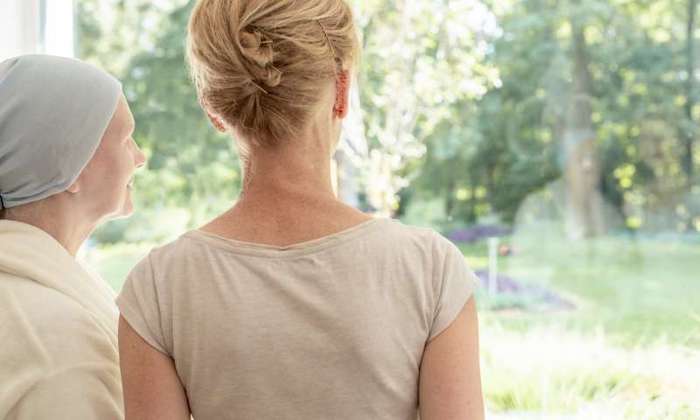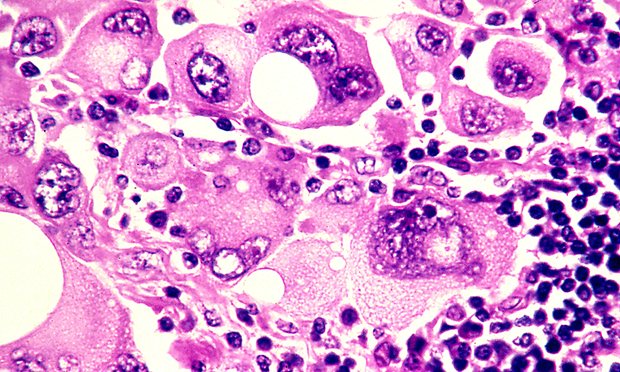
BY Gina Van Thomme
It can be challenging to find the best ways to support a friend or family member with terminal cancer — that is, cancer that can’t be cured or has stopped responding to treatment.
You want to support your loved one, but not overwhelm them. You want to be there for them, but also give them space. You want to say the right thing, but perhaps have no idea what that is.
To help, we asked senior social work counselor Malory Lee for advice on supporting a loved one with terminal cancer.
Be present, even if you don’t know what to say
It can be hard to find the right words to say to a loved one with terminal cancer. But often, showing up with a listening ear is far more important than knowing exactly what to say.
“We don’t have to have an answer. We don’t have to even know what to say all the time. And we don’t have to be worried about saying the right thing all the time. I think most important is just being there,” Lee says.
Don’t be afraid of silence, either. Lee says resisting the urge to fill silence can give both you and your loved one the time and space to understand and process what you are going through.
Allow yourself to feel complex emotions
A terminal cancer diagnosis can understandably bring a variety of emotions. These might include sadness, fear, anxiety, anger, shock, hopelessness and existential dread. Lee says all of these emotions are perfectly normal.
Another common emotion is anticipatory grief, which Lee describes as grief for an expected death that hasn’t happened yet.
“A lot of the time, it’s really the exact same experience as grief. It can feel the same and be just as intense as the grief we experience after a death,” she says.
Although these emotions can be uncomfortable, Lee notes it is important for those with cancer and their loved ones to feel them rather than ignore them.
While navigating emotions surrounding a terminal cancer diagnosis, Lee encourages caregivers to be aware of persistent hopelessness or suicidal thoughts which may point to depression. If you or a loved one is experiencing depression, reach out to a doctor or counselor for support.
“Going through grief and dealing with terminal cancer does not mean we have to feel depressed,” she says.
Avoid statements that compare or minimize someone’s cancer experience
Lee suggests avoiding excessive positivity or statements that start with ‘at least’ when discussing terminal cancer. While phrases such as “At least you had this time to prepare” or “At least you have time to spend with loved ones” may have good intent, Lee says they can minimize the pain someone with terminal cancer is experiencing.
Similarly, approaching a loved one’s terminal diagnosis with too much optimism and positivity can have the opposite effect.
“It may discount a real emotion that someone is feeling and might make them feel like they can’t share what they’re actually going through,” Lee says.
While it can be tempting to share stories and reassurance, Lee also recommends avoiding comparison.
“Every person’s cancer story is so unique; you could even be dealing with the same cancer as someone else and just have a very different experience,” she says. “Listen to the person in front of you, listen to their experience, ask questions about what they’re going through rather than trying to bring in your experiences.”
And what if you do say the wrong thing? Simply acknowledge it, apologize and move on.
Help without being asked
“Let me know if you need anything” can sound like a helpful way to support someone with cancer, but it can also create work.
“It puts the burden back on the person with cancer to determine what they need or ask for help,” Lee says.
While being mindful of your loved one’s wishes and boundaries, consider little ways to help. Lee says this might look like dropping off dinner, helping with cleaning or errands or delivering groceries.
“If you feel there’s something you can do to make things easier, go ahead and do it,” she says.
If you’ve learned that a friend or acquaintance you haven’t spoken to in a while has terminal cancer, you might be wondering whether it is OK to reach out.
“As long as you show genuine care and concern, and again, respect their wishes, I think that’s fine, and can often be very much appreciated,” Lee says.
Keep including them
It might feel like cancer changes everything, but it doesn’t need to alter the way you spend time with a loved one.
“Don’t assume that someone with terminal cancer doesn’t want to do something or won’t be willing or able to join a gathering,” Lee says.
Lee notes that cancer can feel very isolating and, while many times patients are met with lots of support right after their cancer diagnosis, that support may dwindle over time. She encourages loved ones to keep reaching out to a friend or family member with cancer, even if it means finding new ways to accommodate physical limitations.
This might look like playing games together online, gathering closer to a loved one’s home or simply continuing to extend invitations even if your loved one has had to miss events in the past.
Don’t be afraid to talk about difficult topics
Cancer can feel like the elephant in the room, but loved ones don’t need to pretend it doesn’t exist.
Instead, Lee says to let your loved one take the lead in determining what topics are off-limits.
“If a person is uncomfortable sharing or talking about certain things, or if they don’t want to, respect their wishes,” she says.
But if someone with terminal cancer is open to discussing a range of topics, it is OK to ask about health or even end-of-life plans. Lee says having these conversations, while difficult, can ensure you are accommodating a loved one’s wants and needs.
“It’s very critical to make sure we are honoring those wishes. And we can’t honor those wishes unless we know what they are,” she says.
Remember to take care of yourself
Lee recommends caregivers find a support system outside of the loved one they are caring for so they can process their emotions. She also encourages caregivers to take small breaks, even if they are only mental rather than physical.
“There’s no need to feel guilty to take time away to do something that’s truly for you,” she says.
Caregivers can find self-care resources and community by joining MD Anderson support groups or connecting with someone else who’s been there through myCancerConnection, our one-on-one cancer support community.
Finally, Lee says that it is possible – and healthy – to experience happiness during a difficult experience.
“Sometimes we think when we’re grieving or when we’re caring for a loved one who is ill, we have to be sad all the time, and that’s just not true,” Lee says. “In a healthy grief experience, we do experience the full range of emotions, and our feelings often come like waves. It’s perfectly healthy and normal to feel joy and happiness also while we’re grieving.”
Complete Article ↪HERE↩!


